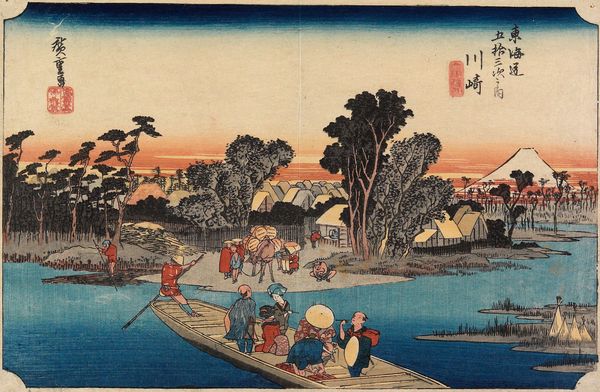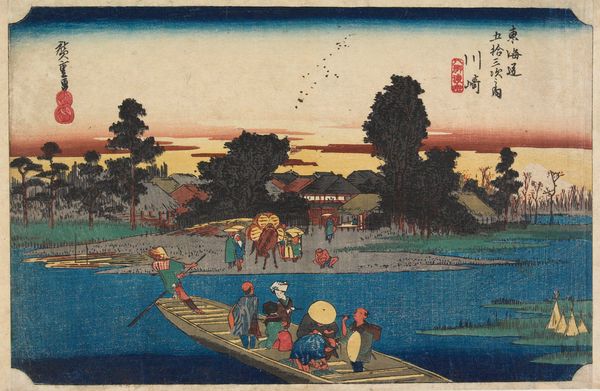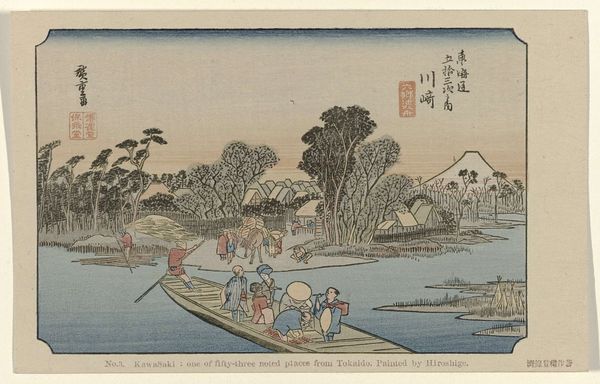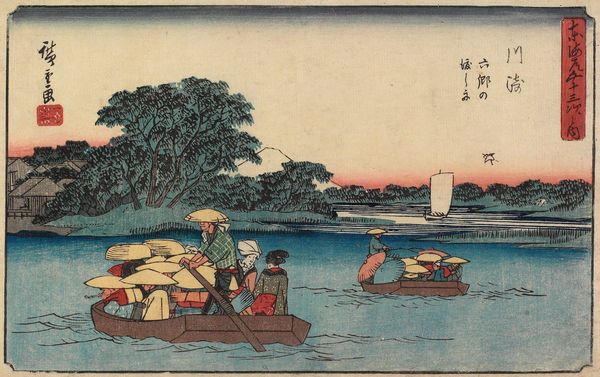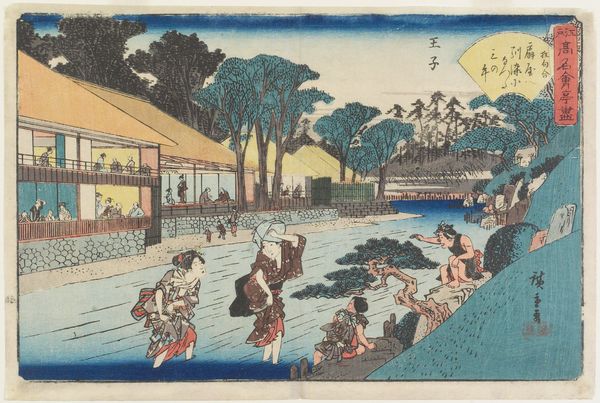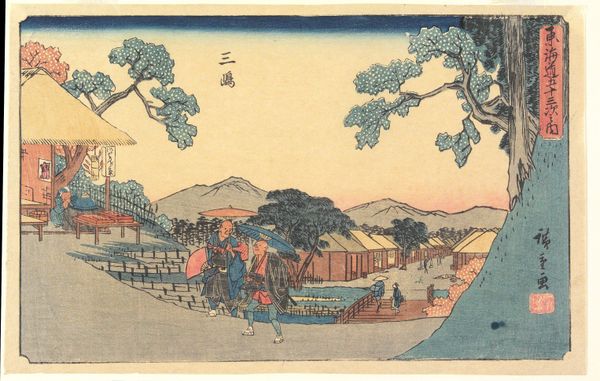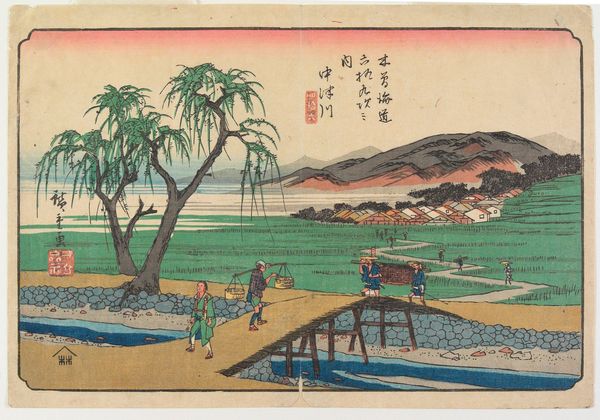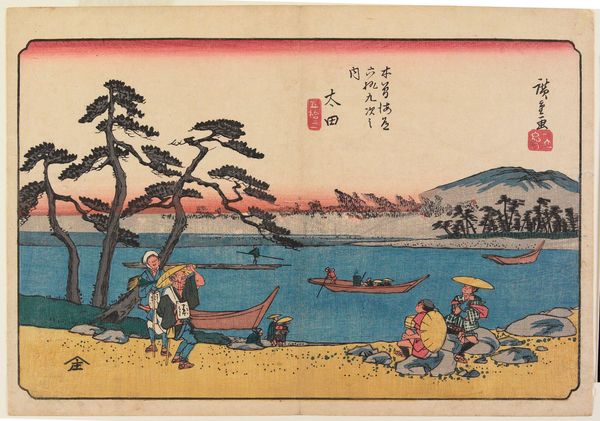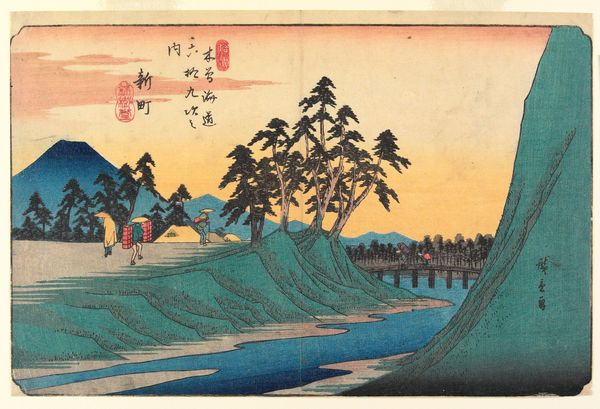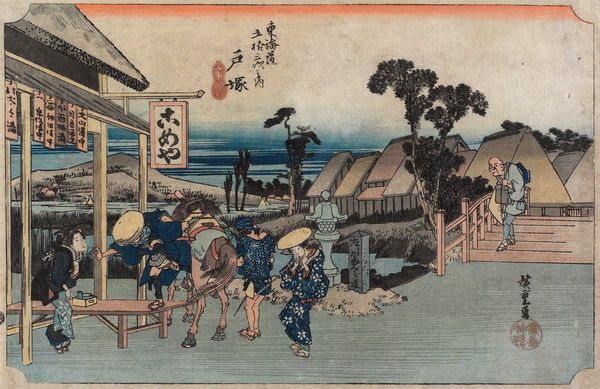
print, ink, woodblock-print
# print
#
landscape
#
ukiyo-e
#
ink
#
woodblock-print
#
orientalism
#
genre-painting
#
watercolor
Dimensions: 9 3/8 × 14 1/8 in. (23.8 × 35.9 cm) (sheet, horizontal ōban)
Copyright: Public Domain
Curator: Here we have Utagawa Hiroshige's woodblock print, "Kawasaki – The Rokugō Ferry," dating from about 1832 to 1833. Editor: It's strikingly peaceful. The vibrant blue of the water really pops, doesn’t it? Almost as if the entire scene is holding its breath. Curator: Indeed. This is part of Hiroshige’s series *Fifty-three Stations of the Tōkaidō*, depicting scenes along the important route connecting Edo, modern Tokyo, with Kyoto. The Tōkaidō became this major commercial and cultural artery. This image represents Kawasaki, one of those stations. Editor: It's more than just pretty scenery. It portrays this really fascinating blend of the ordinary and the epic. Like, here are ordinary people, riding on this small ferry to work, or travelling, and then there's Mount Fuji in the distance looming. This piece makes the whole socio-economic reality of travel under the Tokugawa Shogunate come alive. Curator: Exactly. Think about how class, gender, ability impacted travel and access. We can interpret these images as visual testaments of those experiences, shaped by power structures. Editor: What I find fascinating is the way it shows us the commodification of leisure. It brings up all the debates about orientalism, and about who has the right to represent what. Curator: Definitely. These images quickly became markers of Japanese identity abroad, shaping perceptions of "Japan-ness" in the West in ways that reinforced colonial power structures. The popularisation of the print can be linked to the concept of cultural appropriation in the art market, highlighting discussions about cultural dominance and artistic agency. Editor: It brings up interesting questions about tourism, orientalism and privilege. Who could access the Tokaido, who could buy prints about the Tokaido. Curator: Precisely. Considering how access and perspectives shift across different eras and socio-economic backgrounds helps to frame what is ultimately conveyed. The seemingly innocent image offers a wealth of historical and societal insights. Editor: That's it! What first seems like a pretty image opens onto critical layers to the understanding of access and agency. Curator: An intersectional exploration that provides nuanced comprehension!
Comments
No comments
Be the first to comment and join the conversation on the ultimate creative platform.
